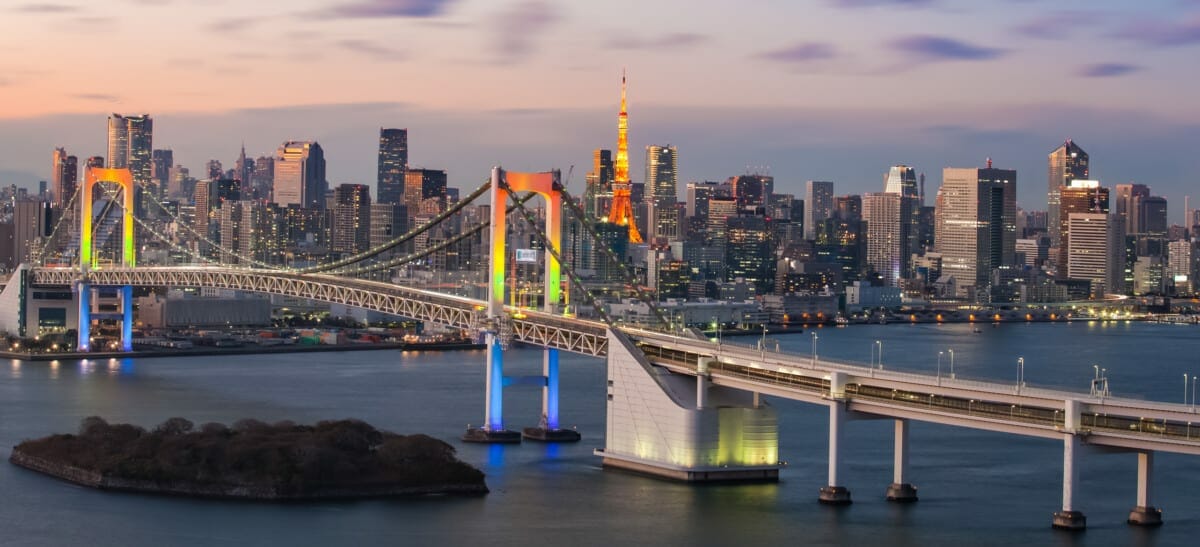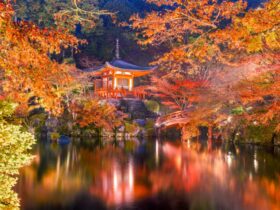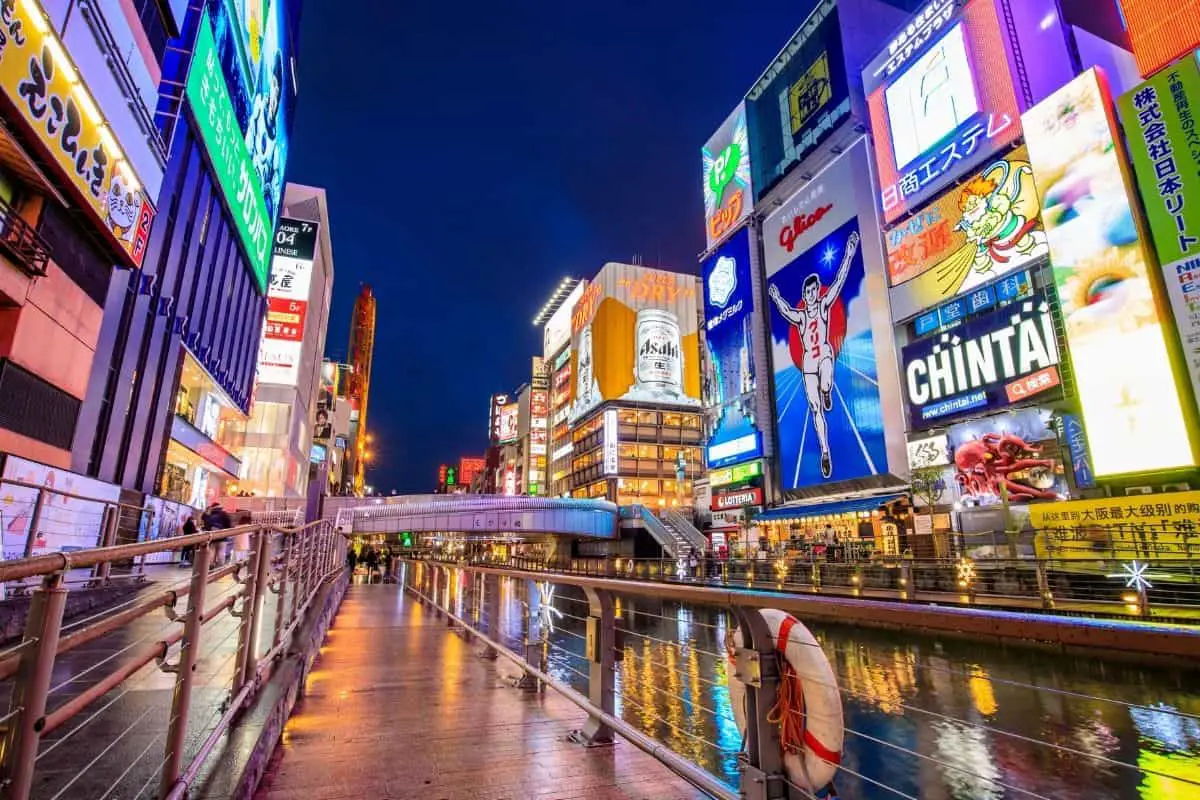Tokyo, the bustling metropolis of Japan, pulsates with energy and teems with life. Amidst its towering skyscrapers, bustling streets, and rich cultural heritage, Tokyo boasts a remarkable feature that serves as both a physical and symbolic connection within the city – its impressive bridges.
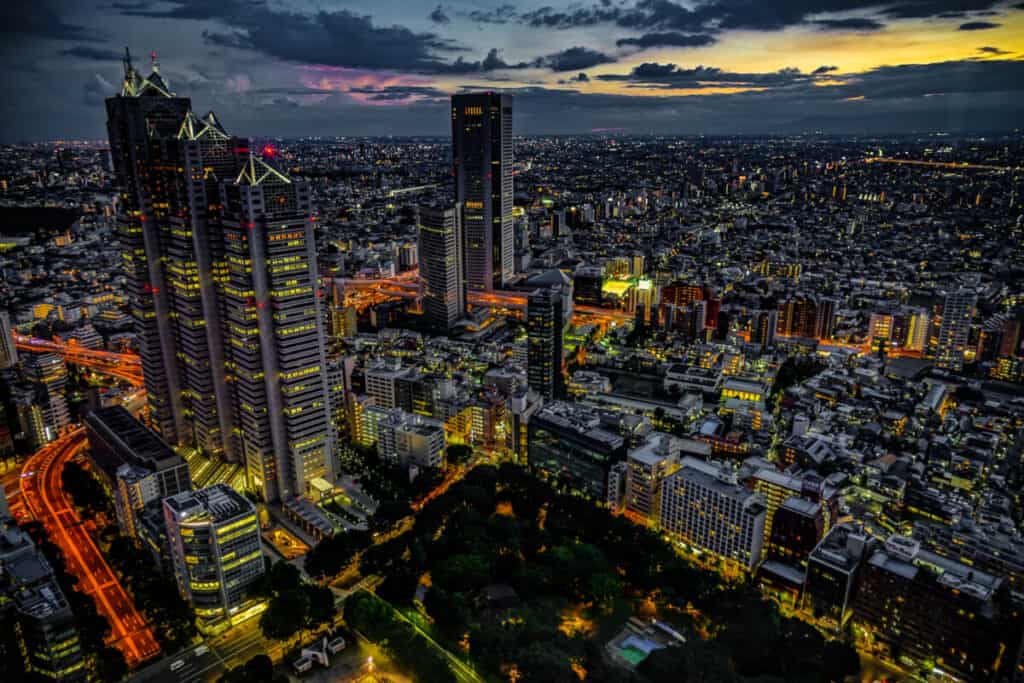
These architectural marvels span the many waterways and transport networks, seamlessly linking Tokyo’s diverse neighborhoods and districts.
Bridges in Tokyo hold profound significance beyond their practical purpose of facilitating transportation. They symbolize the city’s spirit of unity, as they bridge the gaps between different parts of Tokyo, weaving a tapestry of connectivity.
These monumental structures are not mere conduits for vehicles and pedestrians but intricate pieces of art, engineering, and history that shape the city’s character.
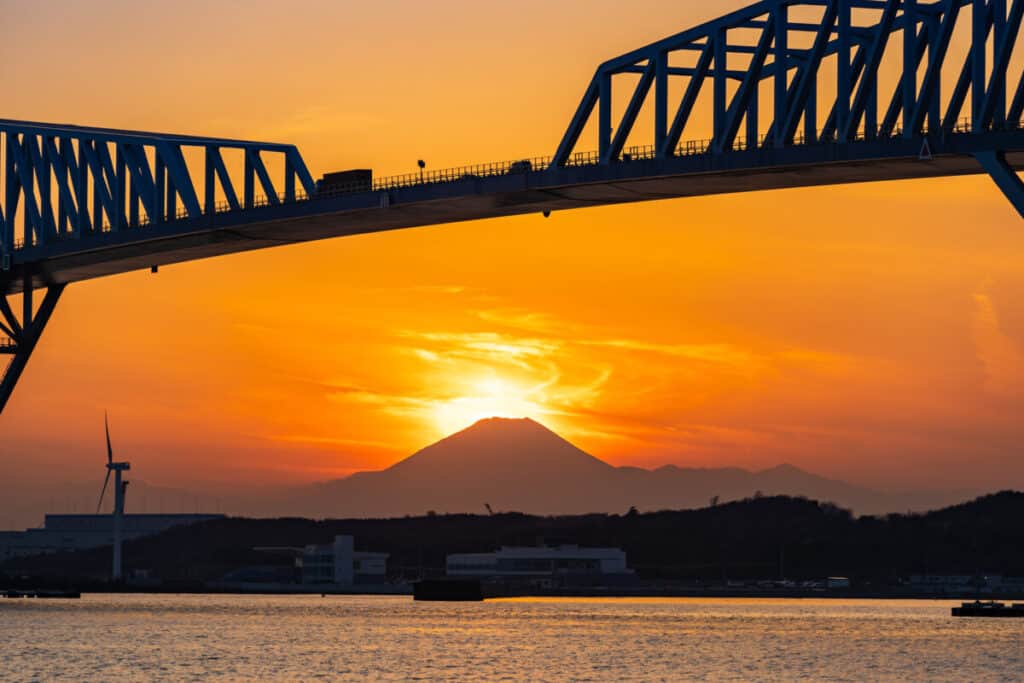
As we embark on this journey, we will delve into the extraordinary world of Tokyo’s bridges and unveil the stories that unfold beneath their majestic spans. We will uncover the hidden narratives, unveil their architectural ingenuity, and explore the unique experiences they offer to residents and visitors alike.
Through this exploration, we will discover how these bridges have become integral to Tokyo’s identity, not only as physical connectors but also as symbols of the city’s resilience, innovation, and cultural heritage.
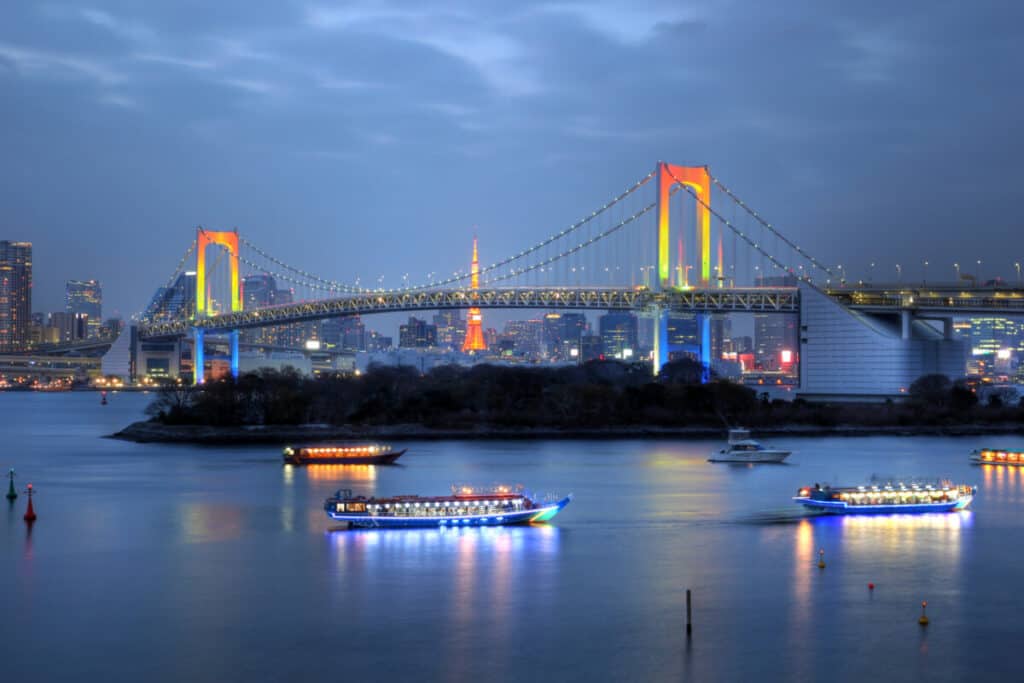
From the iconic Rainbow Bridge illuminating the Tokyo Bay with its vibrant colors to the towering gateways like the Tokyo Gate Bridge, each structure tells its own tale, leaving an indelible mark on the city’s landscape and the hearts of those who traverse them.
Join us on this remarkable journey as we uncover Tokyo’s bridge tapestry, where ancient traditions merge with contemporary designs, and where the city’s pulse reverberates through the steel and concrete.
Together, we will witness the enchanting blend of art, engineering, and human connection that lies within Tokyo’s diverse bridges, and experience the captivating stories that unfold at every turn.
Welcome to the world of Tokyo’s bridges – where the past converges with the present, and the city’s heart finds its rhythm amidst the architectural masterpieces that span its vibrant streets and waterways.
Rainbow Bridge Theme: Iconic Symbol of Tokyo’s Modernity and Diversity
Tokyo, a city that pulsates with energy and innovation, is renowned for its iconic landmarks and architectural marvels. Among these, the Rainbow Bridge stands as a testament to Tokyo’s modernity and cultural richness.
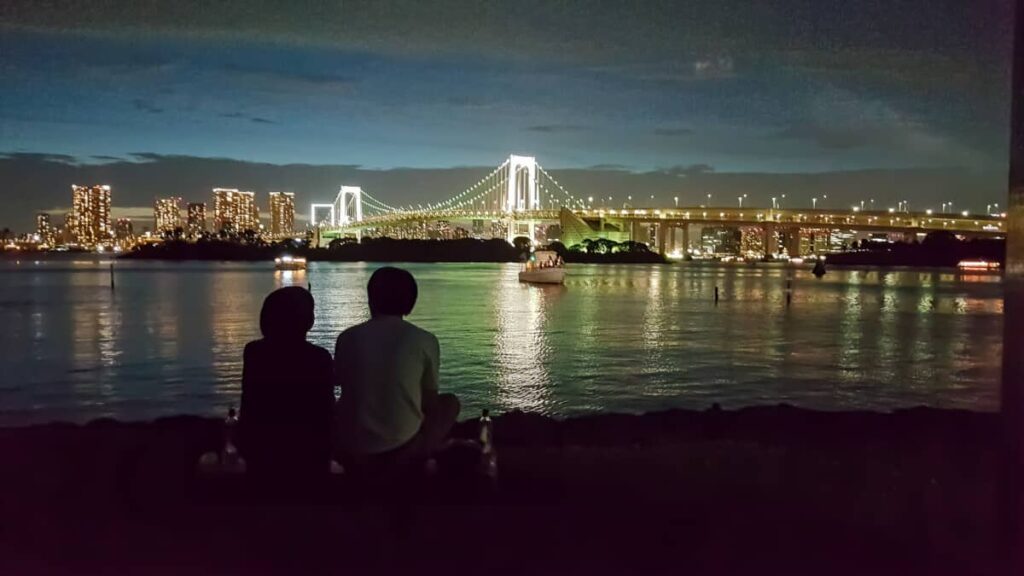
With its vibrant rainbow colors and elegant arches, this bridge has become an iconic symbol of the city’s spirit of unity and innovation.
In this section, we will embark on a journey to explore the captivating history, construction, and significance of the Rainbow Bridge, discovering its role in connecting the artificial island of Odaiba with the bustling heart of Tokyo.

A Technological Marvel The Rainbow Bridge is not just a bridge; it is a remarkable feat of engineering. To understand its significance, we need to delve into its origins and construction. The idea of the bridge was conceived as a means to connect Odaiba, a burgeoning area of Tokyo, with the rest of the city.
The construction of this suspension bridge, with a length of over 800 meters, required innovative techniques and advanced engineering.
Skilled architects and engineers employed state-of-the-art materials and design principles to ensure the bridge’s stability and durability against the harsh weather of Tokyo.
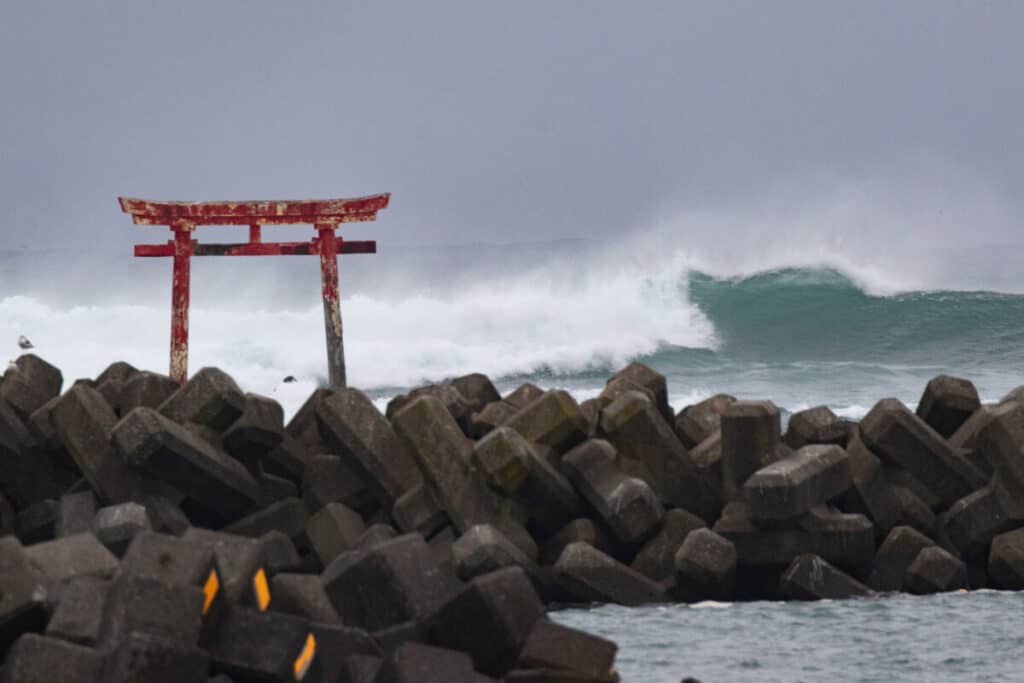
The Rainbow Bridge stands as a technological marvel that showcases Tokyo’s commitment to pushing the boundaries of engineering excellence.
Colors of the Rainbow Bridge derives its name from the vibrant colors that adorn its structure, making it a striking sight against the Tokyo skyline.
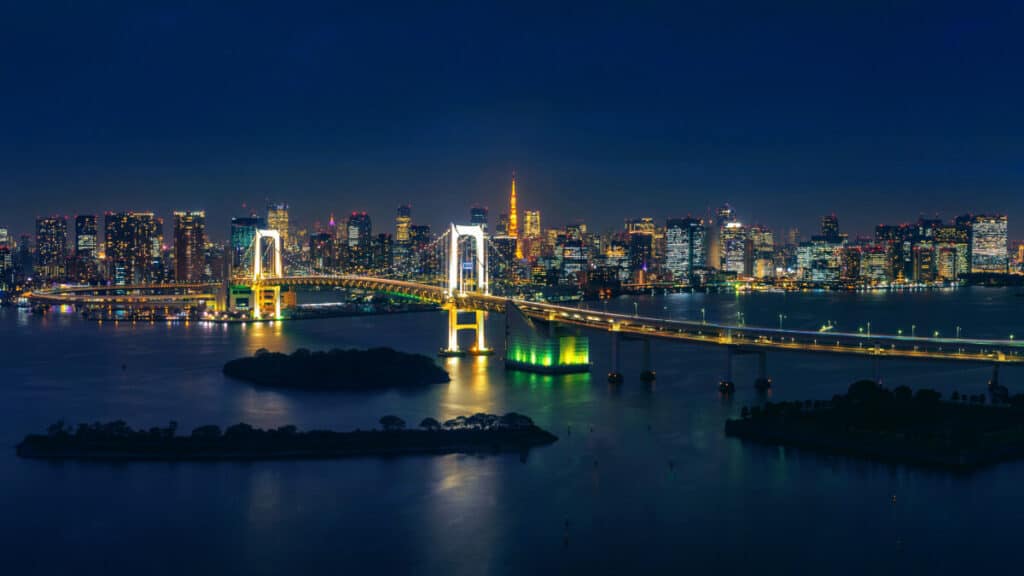
The bridge’s captivating colors hold deep significance. Each shade represents a different aspect of Tokyo’s rich cultural diversity. From soft pastels to bold and vivid spectrums, the ever-changing hues of the Rainbow Bridge create a mesmerizing visual experience. Illuminated at night, the bridge casts a colorful reflection on the waters of the Tokyo Bay, showcasing the city’s vibrant and dynamic spirit.
The colors of the Rainbow Bridge serve as a metaphor for the harmonious coexistence of tradition and innovation in Tokyo.
Connecting Odaiba and Tokyo Beyond its visual appeal, the Rainbow Bridge plays a vital role in connecting the artificial island of Odaiba with the heart of Tokyo.
Odaiba, once a reclaimed wasteland, has been transformed into a thriving district filled with entertainment, shopping, and cultural experiences.
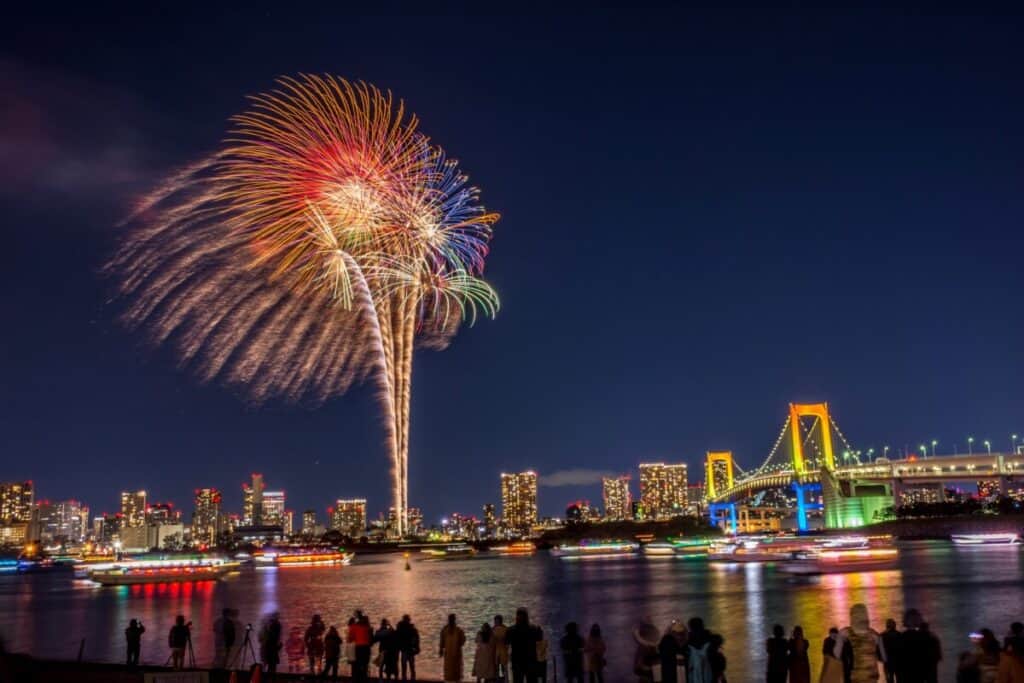
The bridge acts as a gateway, allowing seamless access to and from Odaiba, enhancing the connectivity and accessibility of this vibrant area.
Whether it is for residents commuting to work or tourists exploring the attractions, the Rainbow Bridge stands as a symbol of the city’s commitment to bridging the gaps and forging connections between different parts of Tokyo.
Scenic Vistas and Special Occasions The Rainbow Bridge not only serves as a means of transportation but also offers breathtaking vistas of Tokyo and serves as a backdrop for special occasions.
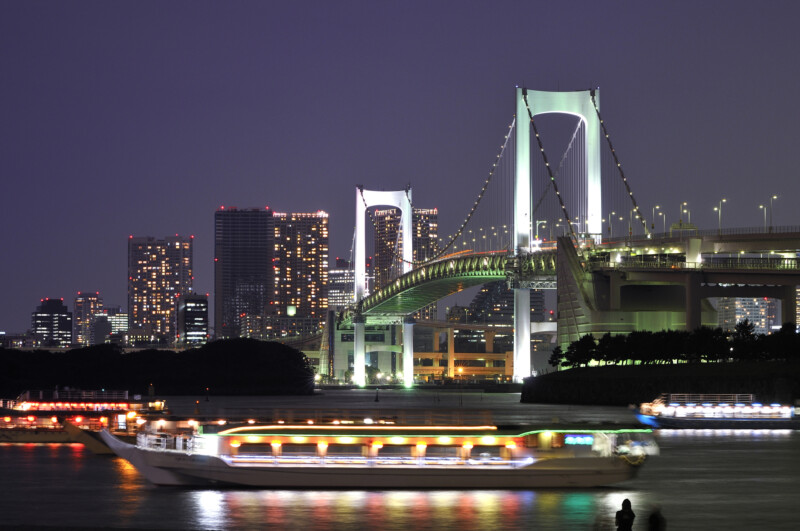
From its elevated position, the bridge provides panoramic views of Tokyo’s skyline and the serene beauty of the Tokyo Bay. The observation decks along the bridge offer visitors a chance to take in the grandeur of the city and witness its ever-evolving landscape.
Furthermore, the Rainbow Bridge is a prime location for fireworks displays, festivals, and other celebratory events.
Whether it is the annual Tokyo Bay Fireworks Festival or New Year’s Eve celebrations, the bridge becomes a focal point of joy and festivity, attracting crowds to witness the dazzling displays against the backdrop of the Tokyo skyline.
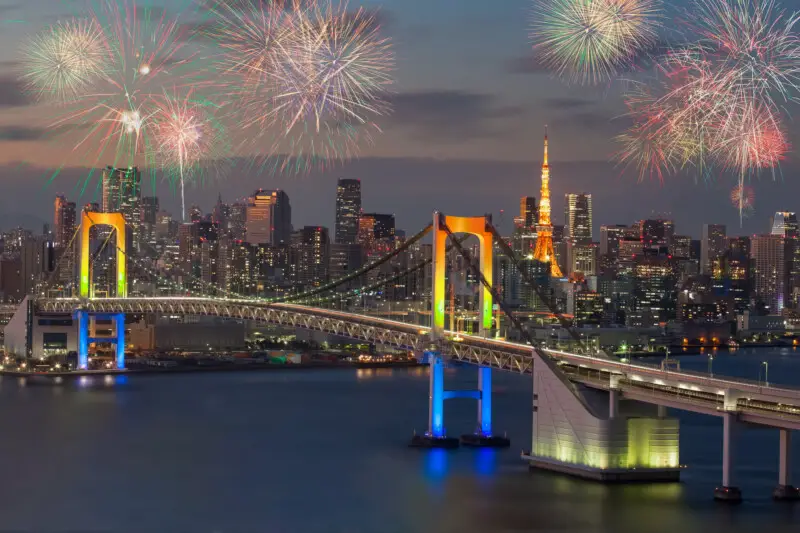
Rainbow Bridge stands tall as an iconic symbol of Tokyo’s modernity and diversity. From its remarkable engineering to its vibrant colors and the unique experiences it offers, the bridge embodies the spirit of the city.
It seamlessly connects the artificial island of Odaiba with the bustling heart of Tokyo, physically and metaphorically bridging the gaps between tradition and innovation, past and future.
The Rainbow Bridge is a testament to Tokyo’s commitment to progress and its ability to create awe-inspiring structures that captivate residents and visitors alike. In the sections that follow, we will continue to explore the magnificent bridges that grace the city, each with its own story and significance in the tapestry of Tokyo’s urban landscape.
Suspension Bridges of Tokyo Theme: Engineering Marvels and Aesthetic Wonders
In the urban landscape of Tokyo, suspension bridges stand as engineering marvels that seamlessly blend functionality with aesthetics. In this section, we will explore the variation of suspension bridges that grace the city, showcasing two notable examples: the Tokyo Bay Connector Bridge and the Tokyo Gate Bridge.
We will delve into the construction techniques, the use of vertical steel cables, and the challenges encountered during their creation.
Additionally, we will highlight the breathtaking views offered by these bridges and their significant contributions to Tokyo’s iconic skyline.
Tokyo Bay Connector Bridge – A Link Across the Bay The Tokyo Bay Connector Bridge, a remarkable suspension bridge, spans the vast expanse of Tokyo Bay, connecting the city’s bustling urban centers. We will delve into the history and significance of this bridge, which serves as a vital link for road traffic between the eastern and western parts of Tokyo.
Construction techniques employed to overcome the challenges posed by the bay’s water currents and the need for a sturdy and durable structure. The bridge’s towering vertical steel cables are showcased as an engineering feat, offering insights into their role in maintaining the bridge’s stability and strength.
Tokyo Gate Bridge – A Gateway to New Horizons The Tokyo Gate Bridge stands as an impressive testament to Tokyo’s innovation and urban design.
We will explore the unique characteristics of this suspension bridge, which serves as a gateway connecting Tokyo’s waterfront and the urban center.
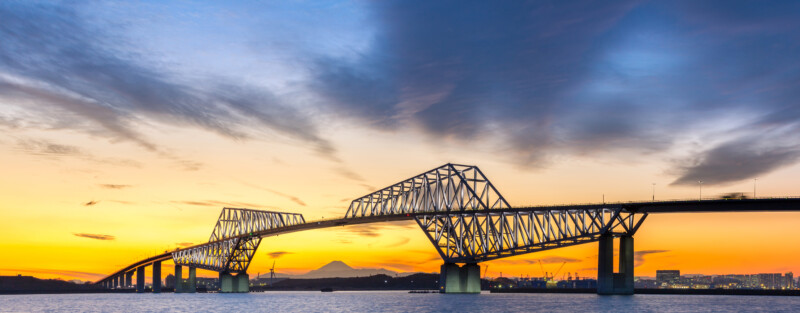
The construction process will be examined, highlighting the intricate balance between form and function. The vertical steel cables that adorn the Tokyo Gate Bridge will be showcased, illustrating their role in providing structural integrity and architectural elegance.
We will delve into the challenges faced during the bridge’s construction, including the need to accommodate maritime traffic and maintain harmonious integration with the surrounding landscape.
Magnificent Views and Skyline Contributions Beyond their engineering prowess, the suspension bridges of Tokyo offer spectacular vistas that capture the essence of the city. We will showcase the magnificent views that can be witnessed from these bridges, whether it’s the panoramic sight of Tokyo’s skyline or the serene beauty of the surrounding waters.
From the elevated vantage points, we can appreciate the harmonious coexistence of modern architecture and natural landscapes.
The Tokyo Bay Connector Bridge and the Tokyo Gate Bridge make significant contributions to the city’s iconic skyline, enhancing its visual allure and becoming integral elements of Tokyo’s urban identity.
This section has explored the suspension bridges of Tokyo, marvels of engineering and aesthetics. The Tokyo Bay Connector Bridge and the Tokyo Gate Bridge showcase the city’s commitment to innovation and its ability to create structures that blend seamlessly with the urban landscape.
These bridges not only serve as functional transportation links but also offer breathtaking views that inspire awe and appreciation.
As we continue our journey through Tokyo’s bridges, we will discover more captivating structures that contribute to the city’s allure, each with its own unique story and impact on Tokyo’s evolving skyline.
Sumida River Bridges: Historical Legacy and Architectural Beauty
The Sumida River flows gracefully through the heart of Tokyo, carrying with it a rich history and serving as a vital waterway connecting Tokyo Bay and the inner city.
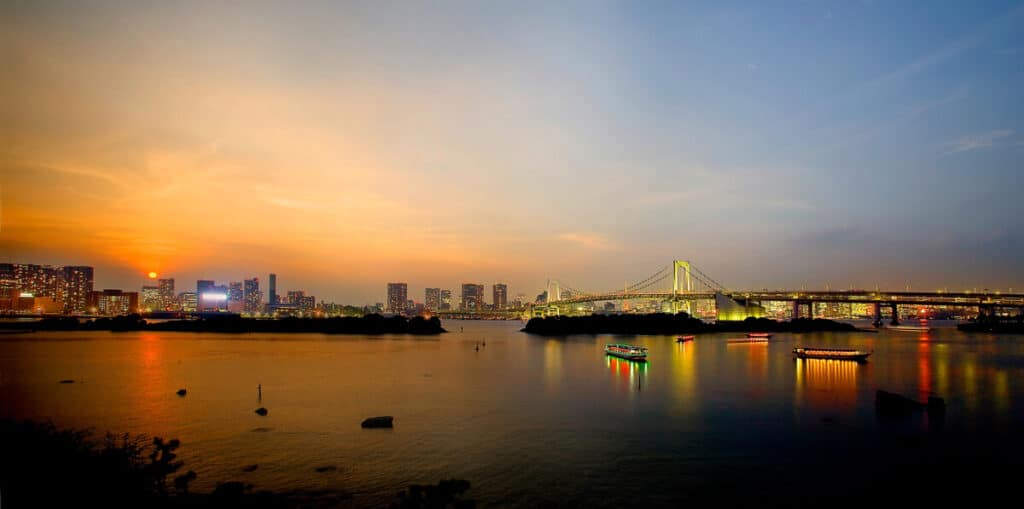
In this chapter, we will delve into the significance of the Sumida River and its bridges, exploring notable examples such as the Kachidoki Bridge, Eitaibashi Bridge, and Yanagibashi Bridge.
We will uncover their unique features, historical importance, and the stunning scenery that surrounds these bridges, showcasing the historical legacy and architectural beauty that grace the banks of the Sumida River.
Section 1: The Significance of the Sumida River Before delving into the specific bridges, we must understand the importance of the Sumida River itself.
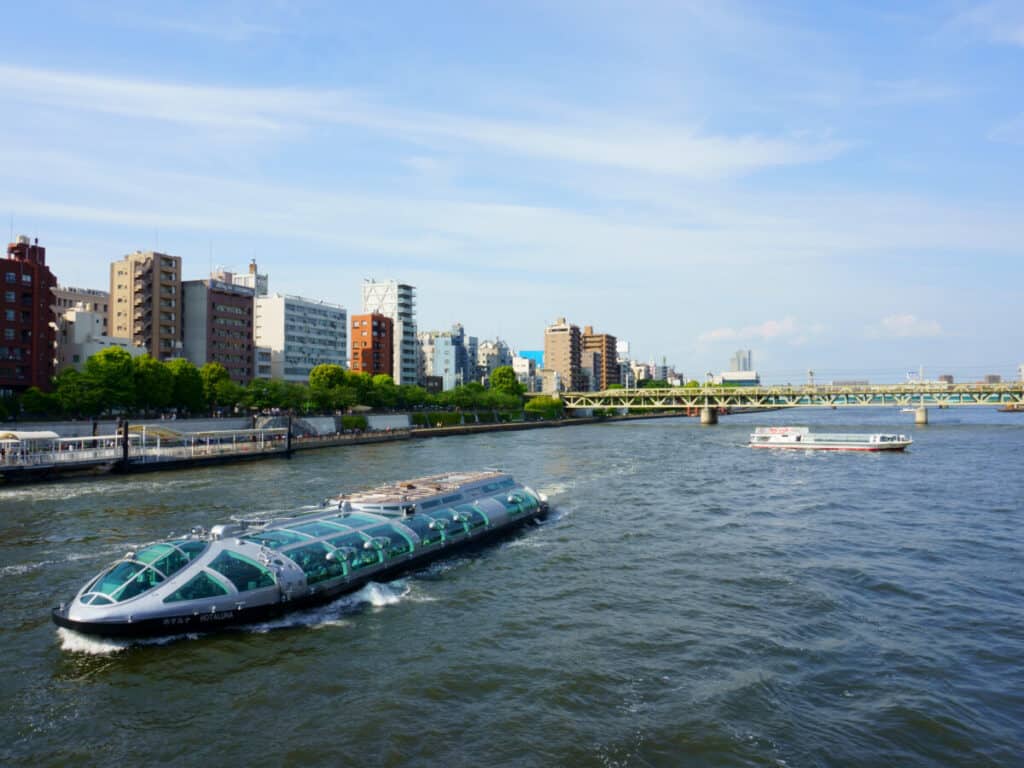
As a lifeline for Tokyo, the river has played a crucial role in shaping the city’s development and culture. We will explore its historical significance, from its role in trade and transportation to its influence on art and literature.
The Sumida River has witnessed the transformation of Tokyo and remains an enduring symbol of the city’s connection to its past.
Section 2: Kachidoki Bridge – A Fusion of Tradition and Modernity Kachidoki Bridge stands as a remarkable symbol of the blending of tradition and modernity along the Sumida River.
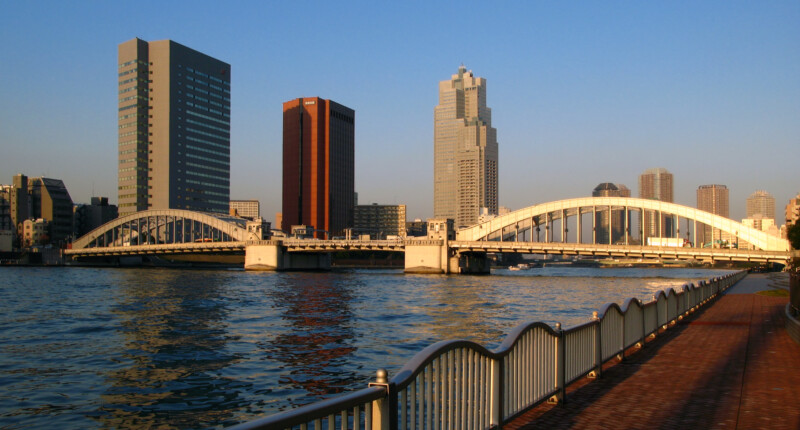
We will explore the bridge’s unique features, including its dual decks that accommodate both road and pedestrian traffic.
We will also delve into the historical importance of Kachidoki Bridge, as it was the first bascule bridge constructed in Japan.
Through examining its design and engineering, we will gain insight into how Kachidoki Bridge seamlessly integrates into the surrounding landscape, preserving the area’s historical charm while serving the needs of a modern city.
Section 3: Eitaibashi Bridge – A Historic Crossing Eitaibashi Bridge holds a significant place in Tokyo’s history and showcases architectural beauty along the Sumida River.
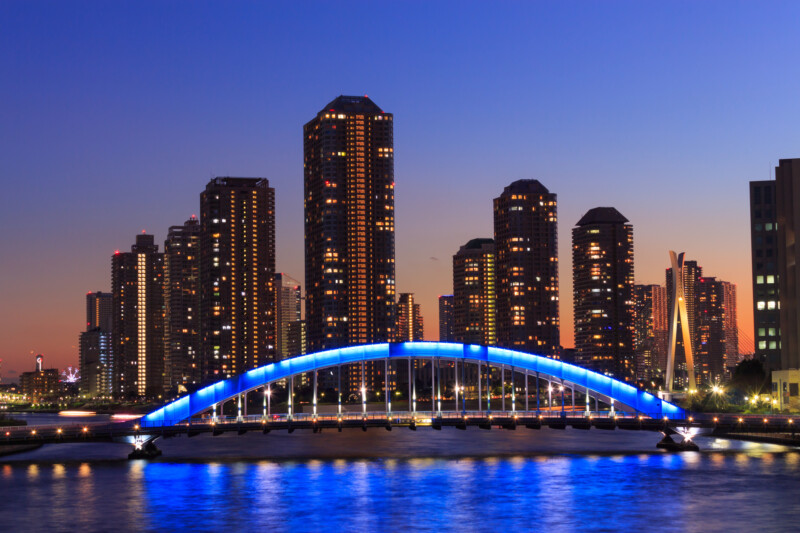
Once a crucial crossing point connecting Edo (now Tokyo) with the northeastern regions of Japan. Its distinctive design, highlighting its cultural significance and the efforts to preserve its traditional aesthetics.
Additionally, its easy to appreciate the stunning views of the river and surrounding scenery that can be enjoyed from Eitaibashi Bridge, capturing the serene beauty of the Sumida River in its entirety.
Section 4: Yanagibashi Bridge – A Gateway to Asakusa Yanagibashi Bridge, located near the iconic Senso-ji Temple in Asakusa, serves as a gateway to one of Tokyo’s most historically rich neighborhoods.
The unique features and historical significance of this bridge, which has undergone various transformations throughout its existence.
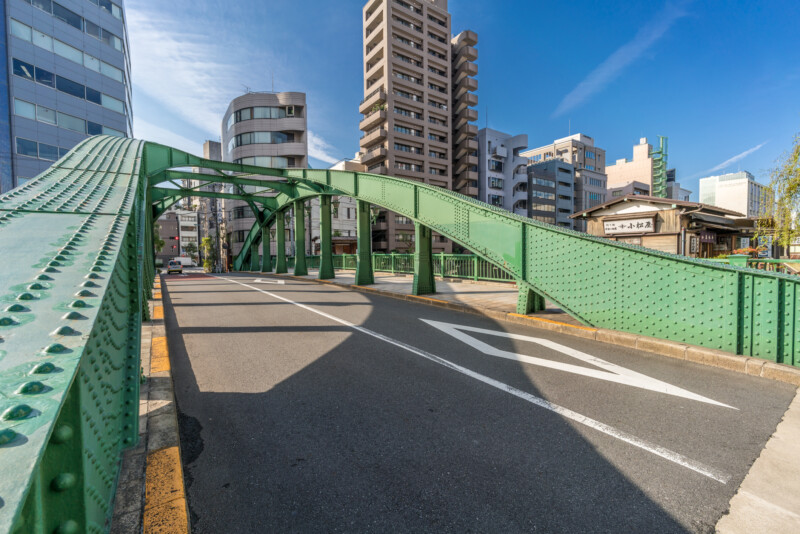
From its role in facilitating religious processions to its adaptation to modern transportation needs, Yanagibashi Bridge has witnessed the evolution of Tokyo.
Explore the beautiful views of the Sumida River and the charming surroundings that make Yanagibashi Bridge a picturesque spot for locals and visitors alike.
This section has allowed us to immerse ourselves in the historical legacy and architectural beauty of the Sumida River bridges.
From the fusion of tradition and modernity on Kachidoki Bridge to the historic significance of Eitaibashi Bridge and the gateway charm of Yanagibashi Bridge, these structures exemplify the rich tapestry of Tokyo’s history and cultural heritage.
As we continue our exploration of Tokyo’s bridges, we will uncover more hidden gems along the Sumida River, each offering its own unique story and contributing to the captivating beauty of this iconic waterway.
Tokyo Tower and its Surrounding Bridges: Harmonious Integration of Tradition and Modernity
Introduction: Tokyo Tower, a towering symbol of the city, stands as an iconic landmark that represents the harmonious integration of tradition and modernity.
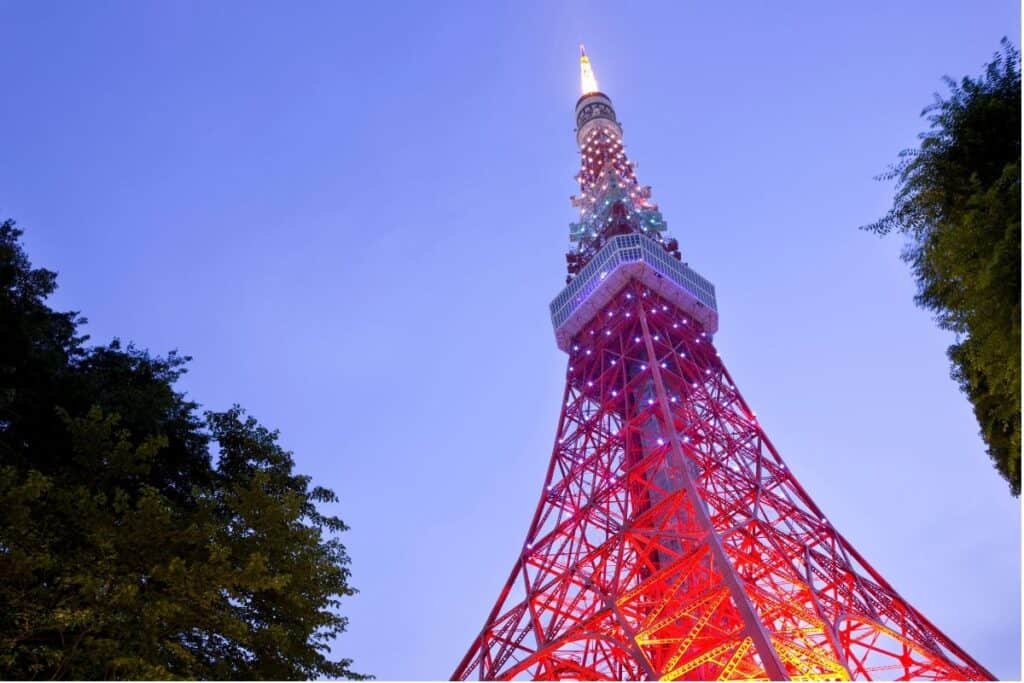
In this section we will delve into the relationship between Tokyo Tower and the bridges that surround it, exploring how these structures seamlessly blend into the urban landscape while offering breathtaking views and enhancing the overall aesthetic appeal.
We will focus on the Tokyo Prefectural Route and the Yurikamome Line, two key bridges that connect Tokyo Tower to the bustling streets of the city, and highlight their significant contributions to the city’s architectural beauty.
Section 1: Tokyo Tower – An Architectural Marvel and Cultural Symbol Before exploring the surrounding bridges, it is essential to understand the significance of Tokyo Tower itself.
The history and construction of this architectural marvel, which stands as a cultural symbol of Tokyo.
Inspired by the Eiffel Tower, Tokyo Tower serves as a testament to Japan’s post-war recovery and its aspirations for the future.
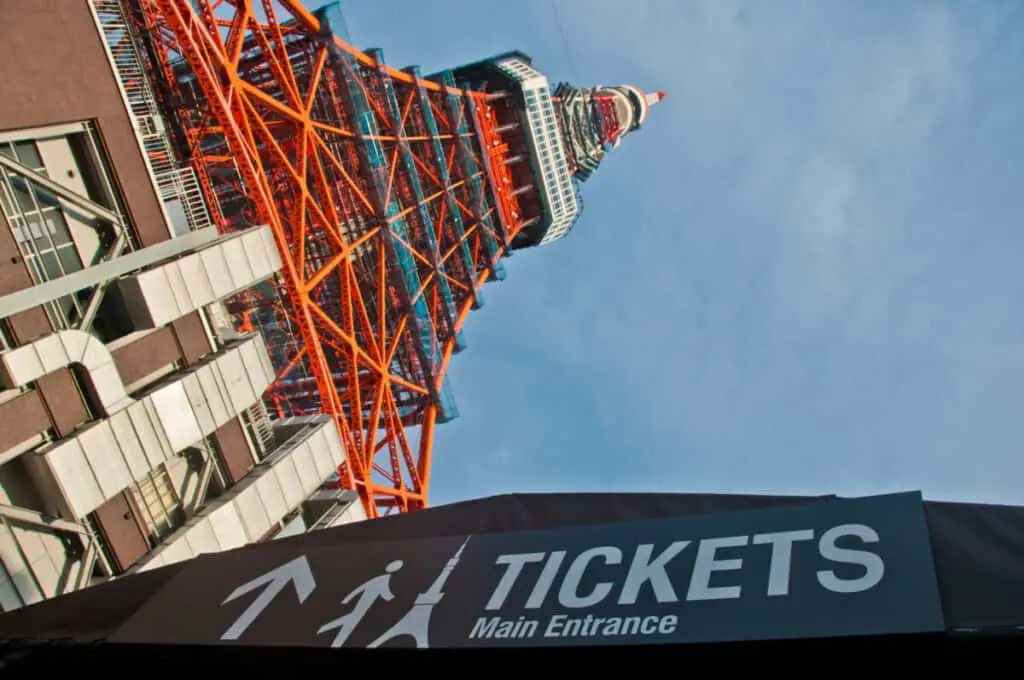
Its iconic design, emphasizing the unique lattice structure and its observation deck, which offers panoramic views of the city and the surrounding bridges. Additionally, we will examine the tower’s integration with the surrounding area, as it stands as a focal point for Tokyo’s cityscape.
Section 2: Tokyo Prefectural Route – Bridging the Gap The Tokyo Prefectural Route plays a pivotal role in connecting Tokyo Tower to the bustling city streets. We will explore the design, construction, and engineering marvels of this urban road bridge.
Emphasizing its functional significance, we will discuss how the Tokyo Prefectural Route accommodates the flow of vehicular and pedestrian traffic, allowing for efficient movement to and from Tokyo Tower.
We will examine its architectural features, highlighting the bridge’s seamless integration with the surrounding landscape and its contribution to the overall visual harmony of the area. Furthermore, we will showcase the views offered from the Tokyo Prefectural Route, capturing the dynamic energy and unique charm of the city.
Section 3: Yurikamome Line – A Futuristic Gateway The Yurikamome Line, an elevated automated transit system, acts as a futuristic gateway to Tokyo Tower.
We will delve into the construction, design, and technological innovations that make this transportation line a remarkable experience for both visitors and residents.
The Yurikamome Line offers breathtaking views of Tokyo’s cityscape and the surrounding bridges, providing a unique perspective that showcases the city’s vibrant energy.
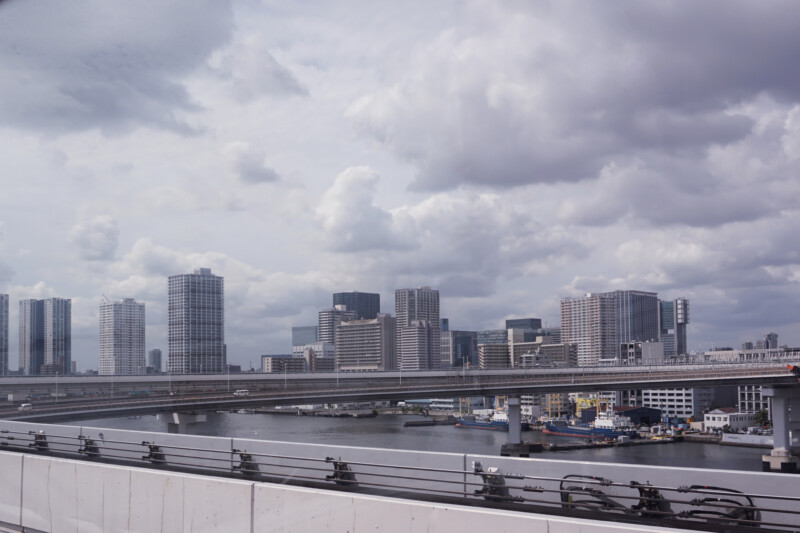
The seamless integration of the Yurikamome Line with Tokyo Tower, emphasizing how the bridge-like structure of the transit line enhances the overall aesthetic appeal of the area.
Additionally, the convenience and efficiency of the Yurikamome Line in transporting people to and from Tokyo Tower.
Section 4: Stunning Views and Aesthetic Enhancements The bridges surrounding Tokyo Tower not only provide stunning views but also contribute to the overall aesthetic charm of the city. We will explore the perspectives and vantage points offered by these bridges, capturing the essence of Tokyo’s bustling streets and dynamic urban landscape.
From these bridges, visitors can admire the mesmerizing cityscape and witness the harmonious blend of traditional and modern architectural styles.
The visual allure and dynamic atmosphere created by the surrounding bridges, showcasing how they enhance the overall experience of Tokyo Tower and add to the vibrant tapestry of the city.
Conclusion: This section has allowed us to appreciate the harmonious integration of tradition and modernity through the relationship between Tokyo Tower and its surrounding bridges.
The Tokyo Prefectural Route and the Yurikamome Line serve as vital connectors, seamlessly linking Tokyo Tower to the bustling city streets and offering
Pedestrian Walkways and Scenic Bridges: Serene Pathways and Picturesque Views
Introduction: In the heart of Tokyo, amidst the bustling streets and towering skyscrapers, lie serene pedestrian walkways and scenic bridges that provide respite and offer picturesque views of the city.
In this section, we will explore these pedestrian-centric spaces and bridges, highlighting their role in enhancing the urban experience and providing unique vantage points for admiring Tokyo’s beauty.
From the tranquil paths along the Sumida River to the vibrant crossings over the bustling streets, uncover the charm and allure of Tokyo’s pedestrian walkways and scenic bridges.
Section 1: Sumida River Promenade – Embracing Nature’s Serenity The Sumida River Promenade offers a tranquil escape from the urban frenzy, with its picturesque walkways along the banks of the Sumida River.
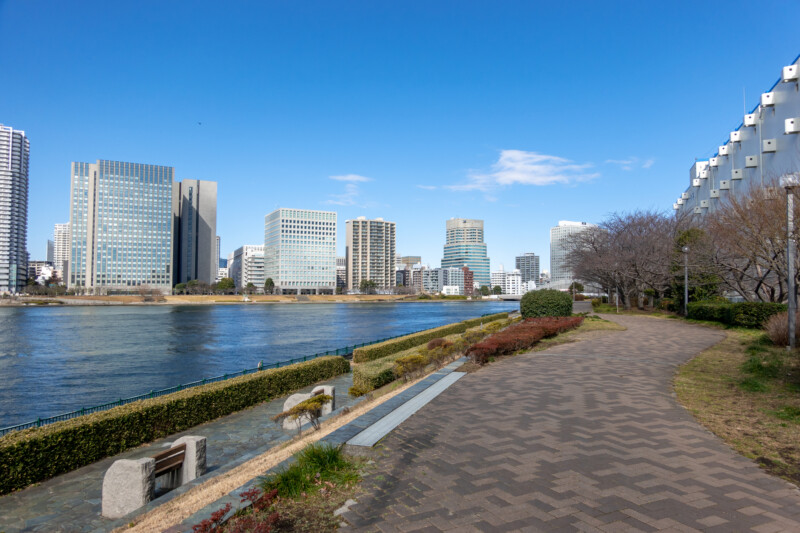
We will explore the design and development of this pedestrian path, highlighting its role in connecting various neighborhoods and providing an opportunity to immerse oneself in Tokyo’s natural beauty.
With cherry blossom trees adorning the riverbanks and stunning views of the city skyline, the Sumida River Promenade offers a serene setting for leisurely strolls and a chance to appreciate the juxtaposition of nature and urbanity.
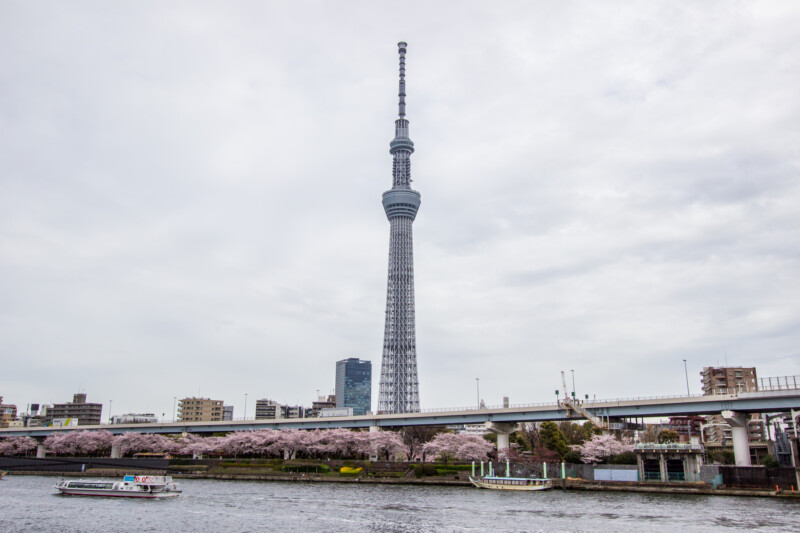
Section 2: Shibaura-Futo Pedestrian Bridge – Connecting Spaces and Perspectives The Shibaura-Futo Pedestrian Bridge stands as an architectural marvel, connecting the Shibaura and Futo districts while offering captivating views of the city and the waterfront.
We will delve into the design and construction of this bridge, emphasizing its unique features and its integration with the surrounding urban landscape. As we traverse the Shibaura-Futo Pedestrian Bridge, we will witness the harmonious coexistence of modernity and nature, capturing breathtaking glimpses of Tokyo Bay, the Rainbow Bridge, and the city’s skyline.
This bridge serves not only as a functional pathway but also as an elevated platform for appreciating the vibrant energy of Tokyo.
Section 3: Kiyosu Bridge – Tranquility Amidst Urbanity The Kiyosu Bridge spans across the Kiyosu Canal, offering a tranquil retreat in the midst of the city’s urban fabric.
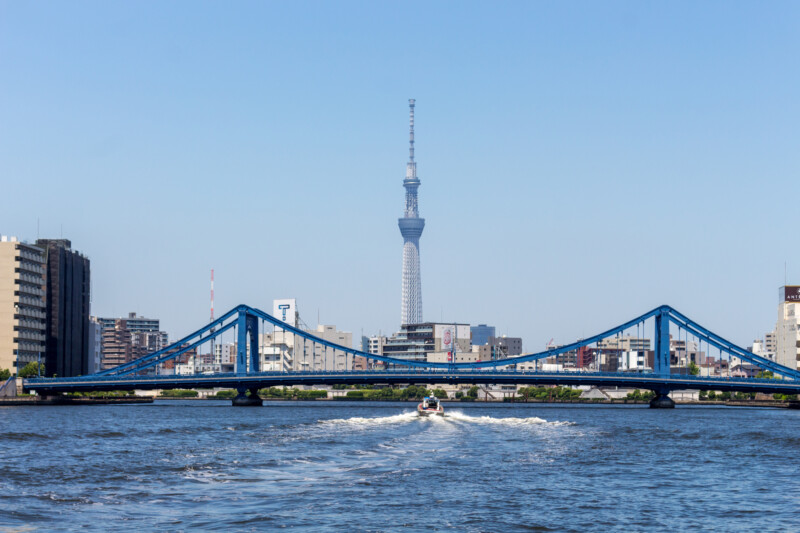
We will explore the historical significance of this wooden bridge, which serves as a reminder of Tokyo’s past and its connection to its waterways.
The Kiyosu Bridge presents a unique aesthetic with its wooden boardwalk and views of the canal’s gentle waters. This bridge contributes to the overall charm of Tokyo, offering pedestrians a moment of respite and an opportunity to reflect on the coexistence of old and new in the city.
Conclusion: this section has allowed us to appreciate the serenity of Tokyo’s pedestrian walkways and the picturesque views offered by its scenic bridges.
From the peaceful Sumida River Promenade to the captivating Shibaura-Futo Pedestrian Bridge and the tranquil Kiyosu Bridge, these spaces offer an escape from the urban hustle and provide a chance to immerse oneself in Tokyo’s natural beauty and architectural splendor.
Whether it’s a leisurely stroll along the river or a vantage point to admire the city’s skyline, these pedestrian walkways and scenic bridges add a touch of tranquility and enhance the overall urban experience of Tokyo.
Final Thoughts On Tokyos Bridges
The bridges of Tokyo form a remarkable tapestry that weaves together the city’s past, present, and future. They are not merely structures of steel and concrete but vital lifelines that connect neighborhoods, span bodies of water, and bridge the gap between history and modernity.
Through the exploration of iconic bridges such as the Rainbow Bridge, Suspension Bridges, Sumida River Bridges, Tokyo Tower, and others, we have witnessed the diverse themes and variations that make Tokyo’s bridge landscape so captivating.
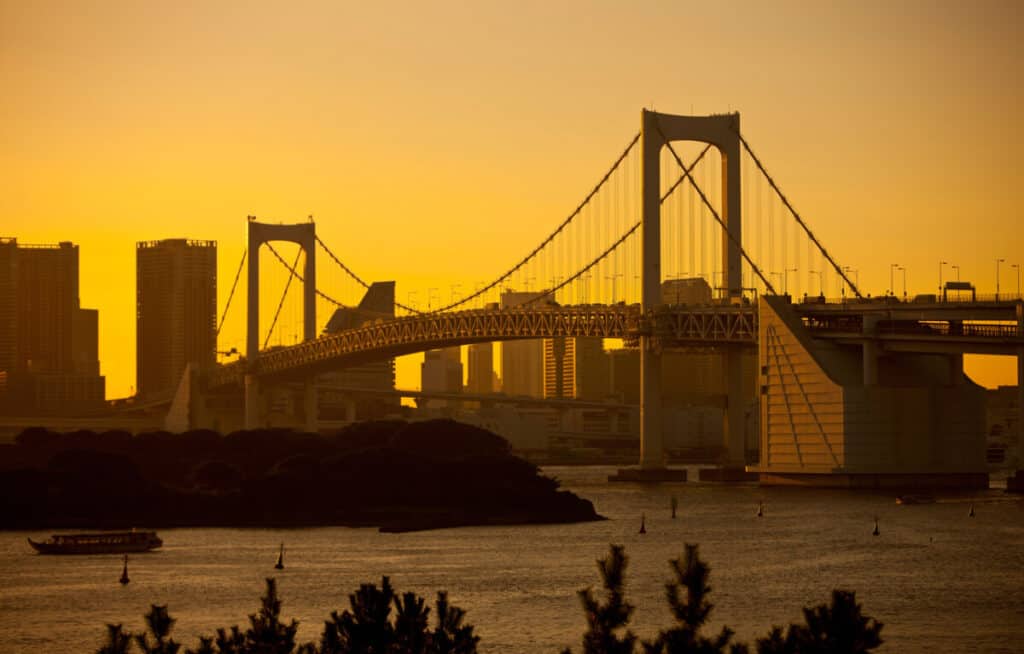
The bridges of Tokyo stand as iconic symbols of the city’s progress, innovation, and cultural heritage. From the impressive engineering marvels of suspension bridges to the historical legacy of wooden bridges, each structure tells a story, reflecting the dynamic spirit of Tokyo.
These bridges serve as witnesses to the city’s growth, from its humble beginnings to its current status as a global metropolis.
The bridges not only serve a functional purpose of connecting different parts of the city but also offer breathtaking views, serve as landmarks, and enhance the urban landscape.
Whether it’s the panoramic vistas from the Rainbow Bridge, the harmonious integration of Tokyo Tower with its surrounding bridges, or the cultural significance of the Sumida River Bridges, each bridge contributes to the overall aesthetic charm of Tokyo.
Moreover, the bridges of Tokyo hold immense significance in connecting people, fostering cultural exchange, and contributing to the city’s vibrant fabric.
They serve as gathering spaces for special occasions, offer pedestrian walkways for leisurely strolls, and provide vantage points to admire the city’s skyline.
These bridges play a crucial role in shaping the urban experience of Tokyo, providing both locals and visitors with memorable moments and a deeper connection to the city’s essence.
As we conclude our exploration of Tokyo’s bridges, it becomes evident that they are not merely functional structures but integral components of the city’s identity. From the historical legacy to the architectural wonders, these bridges stand as testaments to human ingenuity, engineering prowess, and the ever-evolving nature of Tokyo.
They represent the city’s ability to blend tradition with innovation, forging connections and celebrating the diversity that defines Tokyo.
In the end, the bridges of Tokyo stand tall as magnificent structures that span the city, the waterways, and the realms of history and culture.
They serve as vital links, both physical and metaphorical, bringing together neighborhoods, communities, and individuals. These bridges symbolize the resilience, creativity, and beauty of Tokyo, leaving an indelible mark on its landscape and in the hearts of those who traverse them.
As we bid farewell to this exploration, we carry with us the memory of Tokyo’s bridges, their grandeur, and the stories they tell, reminding us of the remarkable city they call home.
15 Of Tokyos Most Well Known Bridges
- Rainbow Bridge – Connects the artificial island of Odaiba to the Shibaura Pier area.
- Tokyo Gate Bridge – Spans Tokyo Bay and connects the Wakasu area in Koto City to the Jonanjima Seaside Park.
- Tokyo Bay Connector Bridge – Crosses Tokyo Bay and links the city of Kawasaki in Kanagawa Prefecture to the Wakasu area in Koto City.
- Kachidoki Bridge – Crosses the Sumida River and connects the Tsukishima and Kachidoki areas in Chuo City.
- Eitaibashi Bridge – Spans the Sumida River between Sumida and Taito wards.
- Azumabashi Bridge – Crosses the Sumida River and connects the Asakusa and Sumida wards.
- Ryogoku Bridge – Crosses the Sumida River and connects the Ryogoku and Sumida wards.
- Nihonbashi Bridge – Crosses the Nihonbashi River and is located in the Nihonbashi district of Chuo City.
- Yanagibashi Bridge – Spans the Kanda River and connects the Asakusabashi and Yanagibashi areas in Taito City.
- Ohashi Junction – A complex interchange that includes several bridges connecting the Ohashi and Aomi areas in Koto City.
- Tsukiji Bridge – Crosses the Tsukiji River and connects the Tsukiji and Tsukishima areas in Chuo City.
- Harumi Bridge – Spans the Sumida River and connects the Harumi and Tsukishima areas in Chuo City.
- Shuto Expressway Inner Circular Route – A series of bridges that form the elevated highway encircling central Tokyo.
- Akihabara Bridge – Crosses the Kanda River and connects the Akihabara and Ochanomizu areas in Chiyoda and Taito wards.
- Showa Bridge – Spans the Sumida River and connects the Asakusabashi and Kuramae areas in Taito and Sumida wards.

